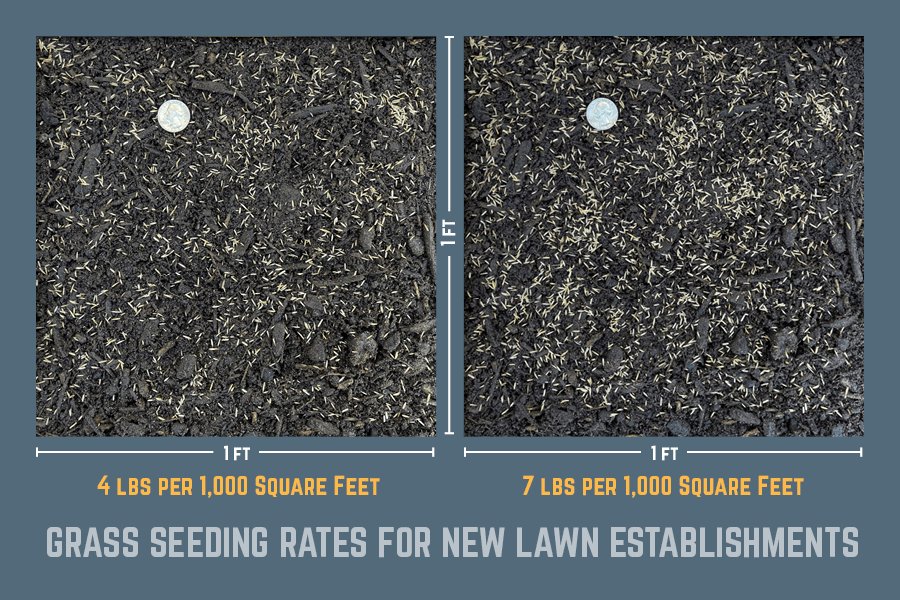To determine how much grass seed to put down, the key lies in understanding your specific lawn’s requirements. Start by measuring the area you want to seed accurately. Next, refer to the seed packaging for the recommended sowing rate based on the type of grass you are planting. Remember, the right amount of grass seed ensures optimal coverage and germination for a lush, green lawn. Let’s dive into the details on ‘how much grass seed to put down’ to set your lawn up for success.
How Much Grass Seed to Put Down
Welcome to our comprehensive guide on how much grass seed to put down for a lush and healthy lawn. Whether you are a seasoned gardener or just starting out, knowing the right amount of grass seed to use is essential for successful lawn establishment. In this article, we will delve into the factors that influence the quantity of grass seed needed, as well as provide practical tips to help you achieve the perfect lawn. Let’s get started!
The Importance of Using the Right Amount of Grass Seed
Before we jump into the specifics of how much grass seed to put down, let’s understand why this step is crucial for the health and vitality of your lawn. Using the correct amount of grass seed ensures even coverage, minimizes competition from weeds, and promotes strong root development. Over-seeding can lead to overcrowding and poor growth, while under-seeding may result in sparse areas and weak grass. Striking the right balance is key to achieving a beautiful and resilient lawn.
Factors to Consider When Determining Seed Quantity
Several factors influence the amount of grass seed you should put down, including the type of grass, lawn size, soil condition, and desired lawn density. Here are some key factors to consider:
1. Grass Type
The type of grass you are planting plays a significant role in determining the seeding rate. For example, fine fescue requires less seed per square foot compared to Kentucky bluegrass. Be sure to check the recommended seeding rates for the specific grass species you are using.
2. Lawn Size
The size of your lawn is another important factor to consider. Larger lawns will require more grass seed compared to smaller ones to achieve uniform coverage. Measure the square footage of your lawn to calculate the amount of seed needed accurately.
3. Soil Condition
The condition of your soil can impact seed germination and growth. If your soil is compacted or lacks nutrients, you may need to adjust the seeding rate to compensate for poor soil quality. Consider soil testing to determine any amendments needed before seeding.
4. Desired Lawn Density
Your preference for lawn density will also influence the amount of grass seed to use. If you desire a thick and lush lawn, you will need to increase the seeding rate. On the other hand, a more moderate lawn density may require less seed.
Calculating the Right Amount of Grass Seed
Now that you understand the factors that affect how much grass seed to put down, let’s explore how to calculate the correct seeding rate for your lawn. The following steps will guide you through the process:
Step 1: Determine Your Lawn’s Square Footage
Start by measuring the length and width of your lawn area in feet. Multiply the length by the width to calculate the square footage. For irregularly shaped lawns, divide the area into smaller sections for easier measurement.
Step 2: Check the Recommended Seeding Rate
Refer to the seed packaging or contact your local extension service to find the recommended seeding rate for the grass species you are using. Seeding rates are typically given in pounds per 1,000 square feet.
Step 3: Calculate the Seed Quantity
Divide the recommended seeding rate by 1,000 to get the amount of seed needed per square foot. Multiply this by your lawn’s total square footage to determine the total pounds of seed required.
Step 4: Adjust for Soil and Lawn Conditions
If your soil is poor or you desire a denser lawn, consider adjusting the seeding rate accordingly. It’s better to slightly over-seed than to under-seed, especially in challenging growing conditions.
Tips for Successful Grass Seeding
Now that you know how much grass seed to put down, here are some additional tips to ensure successful lawn establishment:
1. Prepare the Soil
Before seeding, prepare the soil by removing debris, tilling the top layer, and adding organic matter if needed. Proper soil preparation sets the foundation for healthy grass growth.
2. Use a Seed Spreader
For even distribution, use a seed spreader to apply the grass seed. This ensures consistent coverage and helps prevent over-seeding in certain areas.
3. Water Adequately
After seeding, water the lawn regularly to keep the soil moist for optimal germination. Avoid overwatering, as this can lead to seed washout and uneven growth patterns.
4. Monitor Progress
Keep an eye on the seeded areas and watch for signs of germination. Make note of any thin areas that may require overseeding to achieve uniform coverage.
Choosing the right amount of grass seed to put down is essential for establishing a healthy and vibrant lawn. By considering factors such as grass type, lawn size, soil condition, and desired density, you can determine the optimal seeding rate for your lawn. Remember to follow our tips for successful grass seeding and monitor the progress to achieve the lawn of your dreams. Happy seeding!
We hope this guide has been helpful in understanding how much grass seed to put down. If you have any questions or tips to share, feel free to leave a comment below. Happy gardening!
When is the Best Time to Put Down Grass Seed
Frequently Asked Questions
How do I determine the amount of grass seed to put down?
To determine the amount of grass seed needed, you should consider the type of grass, the size of the area you want to cover, and the recommended seeding rate provided on the grass seed packaging. Measure the square footage of the area to be seeded and follow the instructions on the grass seed packaging for the appropriate seeding rate.
What happens if I put too much grass seed down?
If you put down too much grass seed, it can lead to overcrowding and competition among the seedlings for resources like water, sunlight, and nutrients. This overcrowding can result in weak, thin grass, making it more susceptible to diseases and pests.
Can I mix different types of grass seeds when seeding my lawn?
It is not recommended to mix different types of grass seeds when seeding your lawn unless they have similar growth habits and requirements. Mixing incompatible grass seeds can lead to uneven growth, maintenance issues, and an overall inconsistent appearance of the lawn.
Should I apply a starter fertilizer before or after spreading the grass seed?
It is generally recommended to apply a starter fertilizer before spreading the grass seed. The starter fertilizer provides essential nutrients that promote healthy root development in the newly germinating grass seeds. Following the instructions on the fertilizer packaging will help ensure the best results for your lawn.
Final Thoughts
To achieve a lush lawn, determining how much grass seed to put down is crucial. Consider the type of grass and soil condition for optimal results. Start with a recommended seeding rate to cover bare spots effectively. Over-seeding can lead to competition and poor growth. Remember, the right amount of grass seed ensures a healthy and vibrant lawn.




